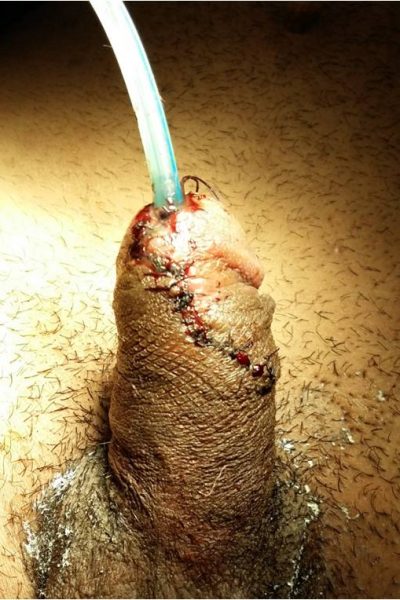Stricture Urethra
Stricture urethra refers to a narrowing in the anterior urethra. The patients most often present with obstructive lower urinary tract symptoms (LUTS) or symptoms of urinary tract infections like epididymitis or prostatitis. A ultrasound and a retrograde urethrogram (RGU) are done to assess the lower urinary tract. The RGU (Fig 1.) will reveal the stricture and also its location and length which are important for planning the treatment. An endoscopy may be required for decision making.

Fig. 1
The three modalities of treatment for stricture urethra are
-
Urethral dilatation
-
Internal Urethrotomy
-
Urethroplasty
1. Urethral dilatation
-
This is the simplest treatment for a stricture urethra and for soft strictures this may be curative. For stricture that are dense,dilatation is a temporary measure to keep the urethra patent and in these the recurrence rate is high. Repeated dilatations in such cases is not a good option and these patients need more invasive treatment.
2. Internal Urethrotomy
-
This is an endoscopic surgery indicated for short segment strictures. It has a success rate of around 70 % in properly selected patients. The advantages of an endoscopic approach are fast recovery, short hospitalization and the obvious cosmetic advantage over an open surgery. In case of a recurrence a repeat attempt may be reasonable but many of these patients eventually require a urethroplasty.
-
We also have the facility to do internal urethrotomy with laser.
 Before Surgery After Surger
Before Surgery After Surger
3. Urethroplasty
-
This is an open reconstructive surgery of the urethra. It is recommended for long segment strictures and in those in whom dilatation or internal urethrotomy have failed. It may be done in a single or multiple stages depending on the complexity of the disease.
.


